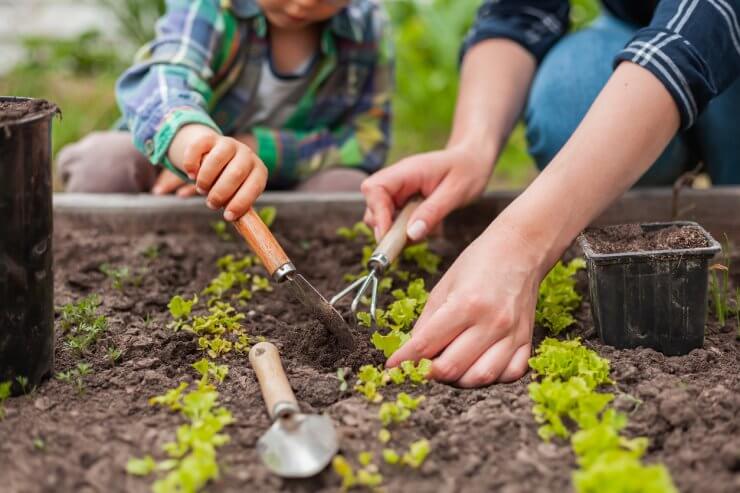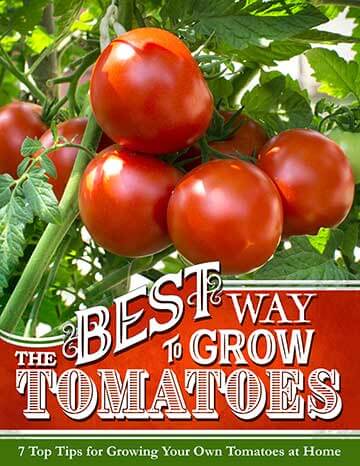
You’re probably wondering what you — one person — can do to help. Well, look no further than your current garden, that unused patch of earth in your backyard or those sunny windowsills.
Whether for personal sustenance, commerce or a hobby, sustainable gardening could be your weapon in the fight against global warming. Here’s how ethical cultivation helps combat climate deterioration.
1. Contributes to the Global Patchwork of Carbon Sinks
Remember the science lesson about photosynthesis, where plants synthesize absorbed light and carbon dioxide (CO2) to make their food? It’s time to put that knowledge to work.
Leaves and roots draw CO2 out of the air. The CO2 is stored in the plant and the soil beneath in what’s known as biologic and geologic carbon sequestration, which experts say is one of the best approaches to mitigating climate change. This means the more you grow, the more you’re helping to regulate the amount of CO2 in the atmosphere.
To maximize your impact, opt for perennial plants and trees. Long-living species develop deep root systems that store carbon more effectively than annual and seasonal crops.
2. Turns Waste Into Living Gold
When you compost kitchen scraps and farm debris, you decrease landfill contributions while creating a nutrient-rich elixir for your plants. Landfills are notorious for producing methane, a greenhouse gas far more potent than CO2.
That banana peel you’re about to toss? It could be the key to growing your next batch of kale. In the right conditions, the compost breaks down, adding more soil to the ground, enabling it to store more carbon while building a better home for beneficial microorganisms. It’s like creating a five-star crawl-in hotel for beneficial organisms like earthworms.
3. Supports Water Conservation Efforts
Climate change isn’t just about temperature — it also concerns water. Other than composting, eco-friendly agricultural practices like collecting rainfall, prioritizing drought-resistant plants and water-smart landscaping help conserve this precious resource while making land more resilient to global warming.
You can capture enough rainwater to nourish growing crops through dry spells by strategically designating water catchment spots around your property. A thick mulch keeps that moisture where it belongs — in the soil feeding the plants.
4. Reduces Food Miles
Those fresh vegetables and fruits you buy at the supermarket in the winter have likely traveled farther than you did on your last vacation. By growing your food or sourcing from local farmers, you’re lowering greenhouse gas emissions associated with the transportation, packaging and storage of produce.
There’s something magical about walking outside with a basket and returning minutes later with fresh, crisp lettuce, sun-warmed tomatoes, and fragrant herbs for a salad. Not only does it taste better, but you’ll also feel guilt-free knowing your meal didn’t require a drop of fossil fuel to reach your plate.
5. Sustains Community Through Gardens
Did you know that less than half of Americans live within half a mile of a park or public green space? This statistic spotlights why public gardens are becoming a feature in climate change talk, particularly in urban settings.
These shared spaces aren’t just places to admire nature or congregate — they’re oases amidst modern concrete jungles. They bring climate-cooling benefits right into your neighborhood. Whether it’s a tree-lined nature trail, grassy picnic area or park bench surrounded by flower gardens, spending just half an hour in a park can benefit physical, mental, emotional and social well-being.
Science even shows a link between improved nutritional choices among gardening communities. People who live near farms or cultivate crops eat more fresh produce. The tactic is even being used to encourage cancer survivors over 60 to observe healthy diets, particularly after a study found that their daily fruit and vegetable consumption increased by a serving after just a year of supported home gardening.
Domestic growers also often have extra produce they can sell. This naturally fosters connections with neighbors and conscious consumers at organic markets. Who knows? You could inspire a few people to start their own gardens. Before you realize it, you’ll have helped create a sustainable local food economy.
6. Preserves Biodiversity
Climate change and biodiversity disruption go hand in hand, but going green may combat both. Growing heirloom varieties and saving viable seeds helps preserve genetic diversity, which is essential for developing climate-resilient crops.
Gardens are a living seed bank. When you grow that oddly shaped variety from a stash of well-preserved pips your grandma gave you, you’re helping keep these unique varieties alive for future generations.
7. Supports Pollinator Populations
Over three-quarters of all global crops rely on pollinators for fertilization and seed production. Without them, yields would drastically decline, and some plants would go extinct.
Unfortunately, the fight isn’t one-way. Pollinators are suffering. Recent studies reveal a rapid decline in butterfly and bee populations worldwide. The culprit? Climate change.
The effects of global warming disrupt the conditions required for the survival of nature’s ambassadors. Unpredictable, extreme weather events continue to destroy their habitats and mess with their food sources by changing the timing and availability of flowering plants.
Thankfully, you can tag into the fight to bring down the common foe. Consider:
- Replacing intensive farming with organic practices. While it’s tempting to maximize input into every inch of the garden to push for the highest output, land erodes after each planting cycle. Over time, reliance on quick-fix chemicals to fertilize the soil increases, impacting the environment further.
- Swapping to organic pest and disease control.
- Companion planting that comprises nectar-flowering species.
The next time you notice a buzz of bees around blossoms, this is the sound of nature securing your future harvest.
8. Offers Lessons to the Next Generation
One of the most impactful ways sustainable gardening can impact climate change is through the lessons it teaches others, especially children. When young people get their hands dirty and see firsthand how food grows, they develop a deeper understanding of natural systems and why they’re worth protecting.
They’ll never forget when they pulled their first crop from the ground. That moment of wonder and connection with nature is worth more than a thousand lectures about environmental preservation.
Getting Started With Your Gardening Project
Ready to begin your gardening endeavors? Here’s how to approach your project throughout the seasons:
Spring
Now is the time to plan and sow. Most people prefer to pregerminate the seeds while they prepare the soil, though some varieties can be put in the ground directly. This is the optimum time to apply compost and set up a rainwater collection system.
Summer
Along with the rising heat comes the joy of tending that ends with harvesting. Keep your soil covered with mulch to retain moisture and continue building soil health. This is also when you start collecting seeds from your best yield for next year.
Autumn
Fall is for soil building and late harvests. At the end of the growth cycle, turn leftover plant material into the soil or incorporate them into your compost pile. Every leaf and stem you keep out of the landfill is a win for the climate.
Winter
When cold, wintry weather takes over from cool autumn, it’s time to complete the fall yield, take stock and make discoveries. You can use this time to relax, plan for the upcoming year, connect with other gardeners and learn new or improved sustainable techniques.
Taking a break from active farming is necessary for a balanced ecosystem. This is when native species seeds go through a pretreatment period in the chill to germinate come spring. Snowfall insulates the ground, protecting underground roots and tubers from frost damage. It’s also nature’s way of conserving water, as it’ll melt to hydrate the ground when temperatures rise.
Better yet, take the salmon approach — swim against the current. Cultivate some winter crops. Plants like cabbages, turnips and resilient bloomers such as Christmas roses and camellias are known to brave the frigid conditions. Growing cover crops is recommended to protect and enrich your soil through winter. If the outdoors is a no-no, you could also start a small indoor herb garden to keep your green thumb active.
Keep Your Hands Dirty and Your Climate Footprint Clean
Sustainable gardening is about working in tandem with nature rather than against it. So, grab your tools and join the movement. Every tomato you grow, every bucket of compost you make and every pollinator you support is a cog in the reversal wheel of climate change. You’re lowering your carbon footprint, but most importantly, you’re actively contributing to the health and well-being of the planet and all its inhabitants for years to come.
Discover 7 top tips for growing, harvesting, and enjoying tomatoes from your home garden—when you access the FREE guide The Best Way to Grow Tomatoes, right now!




